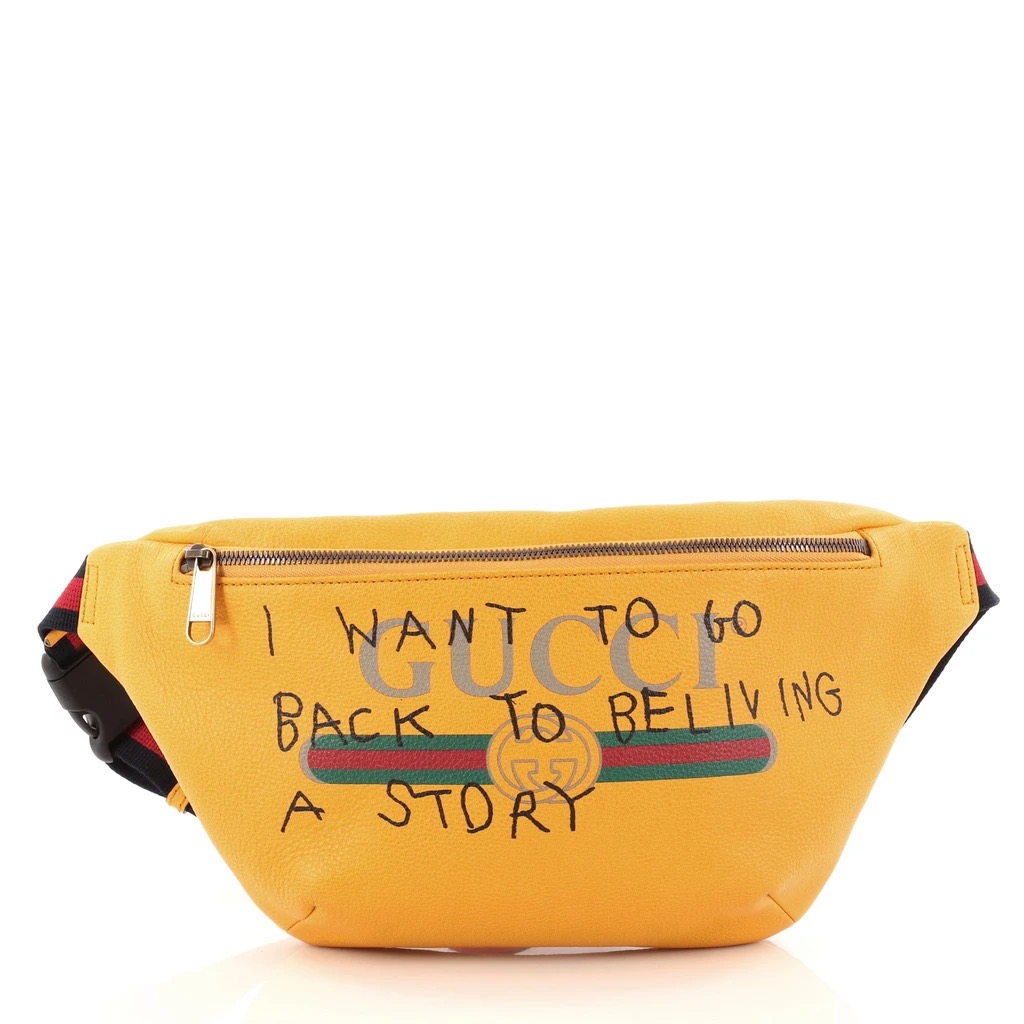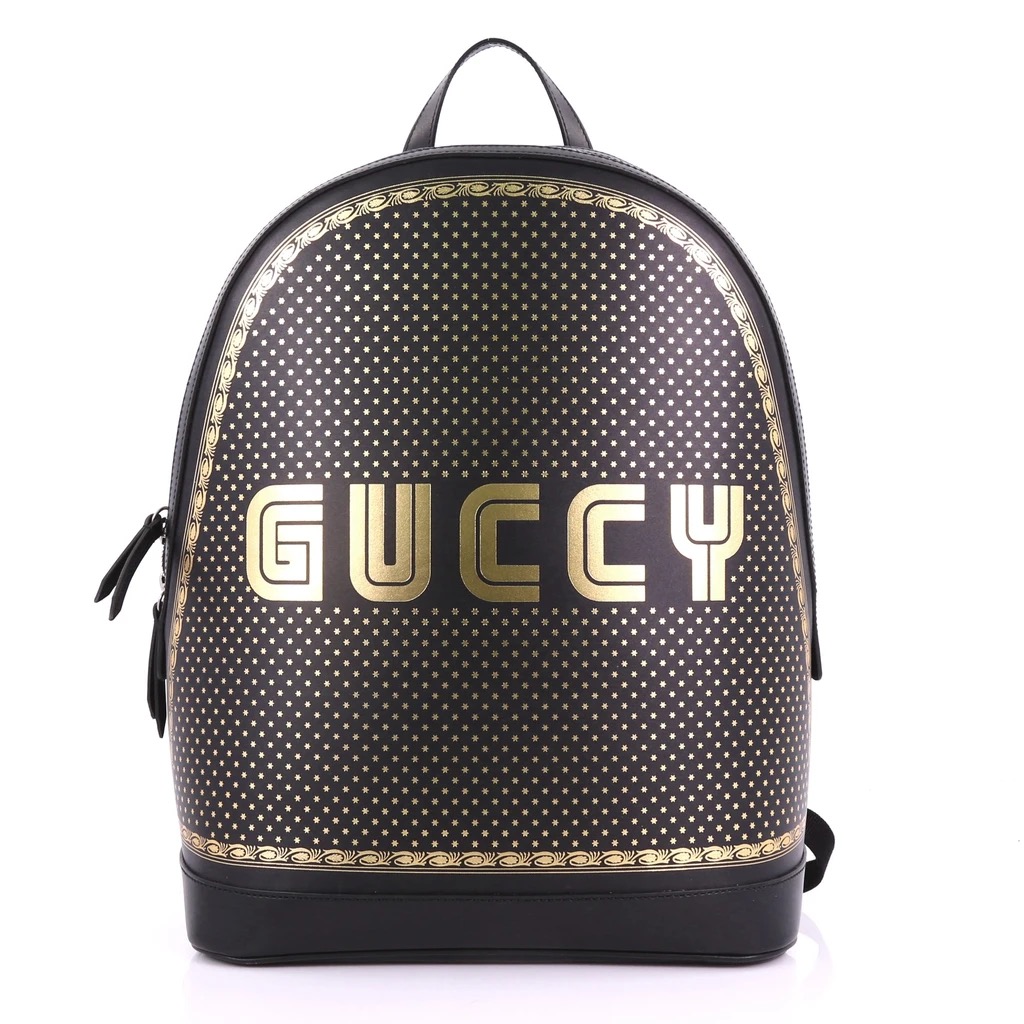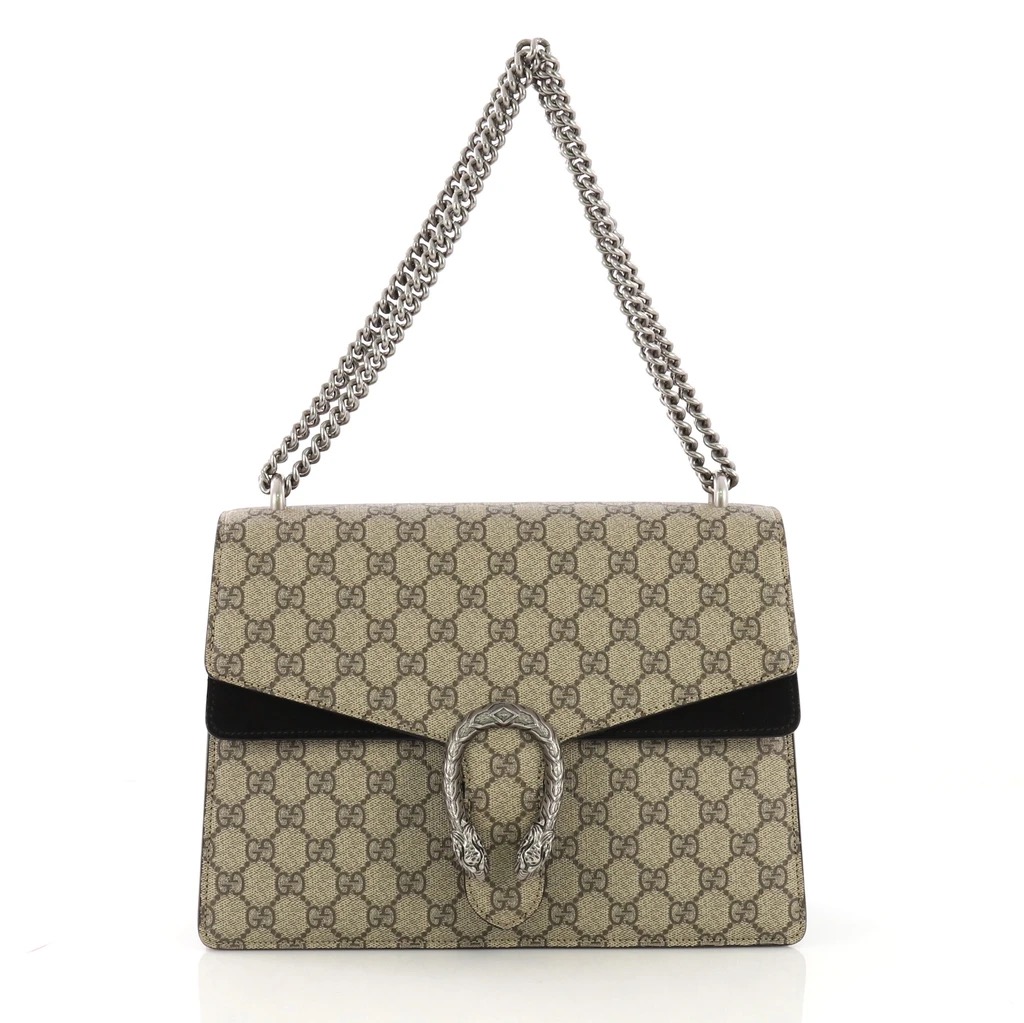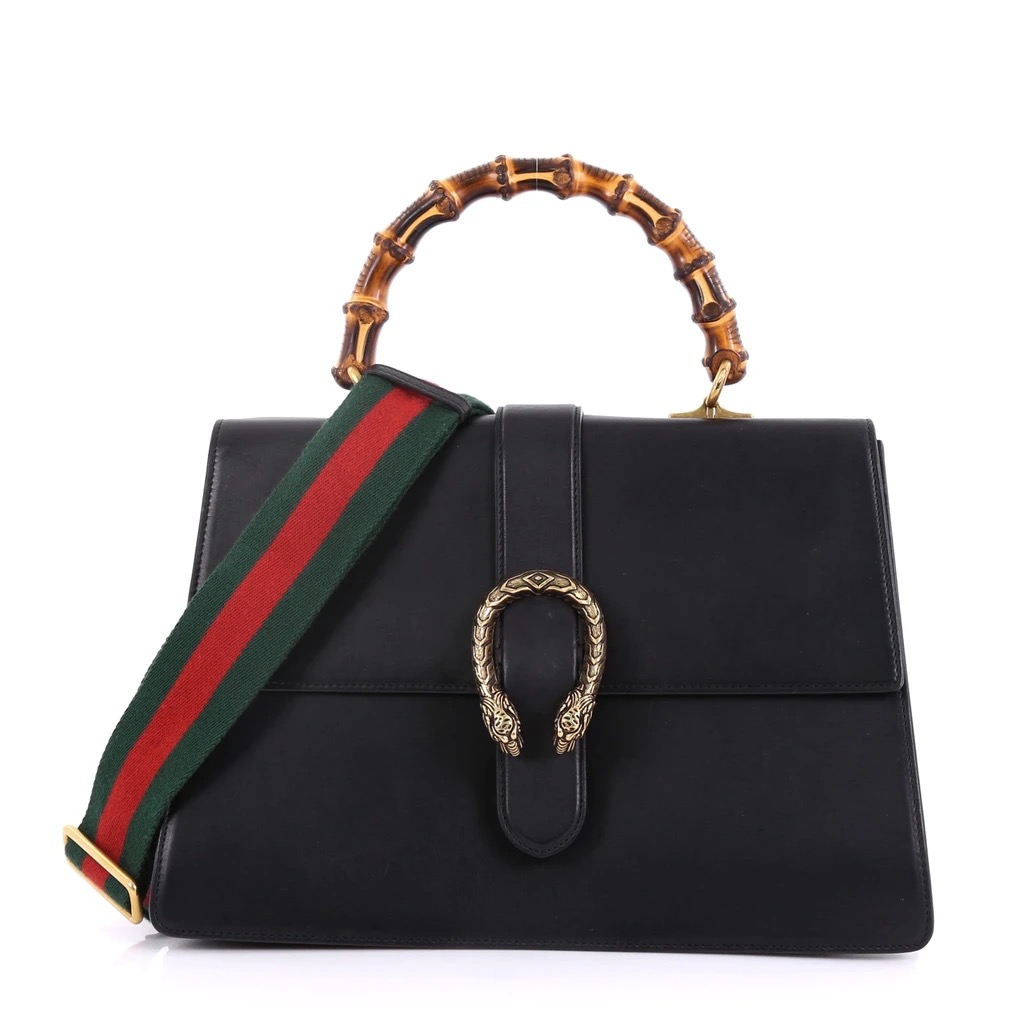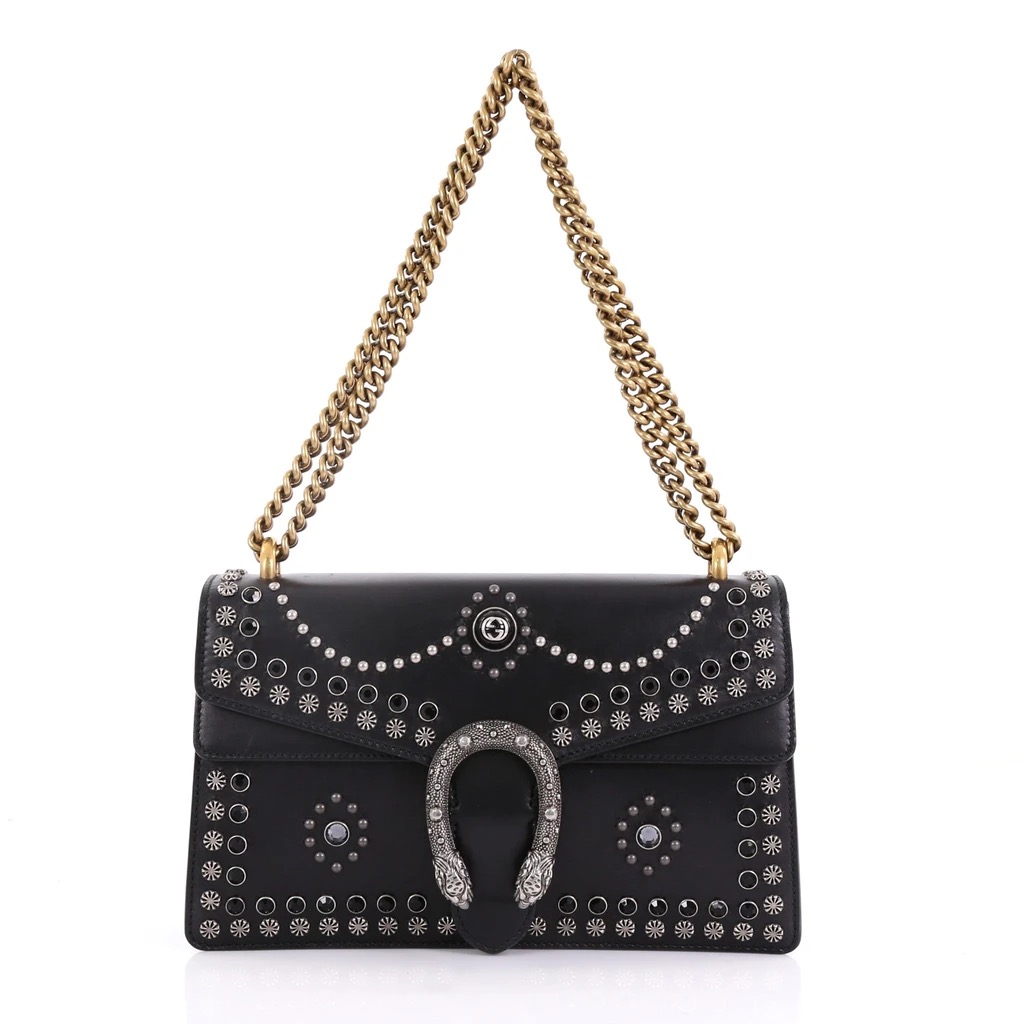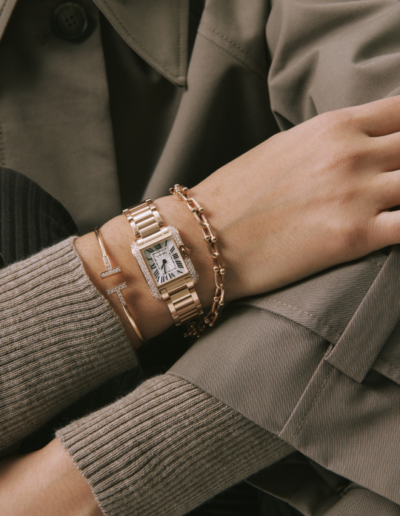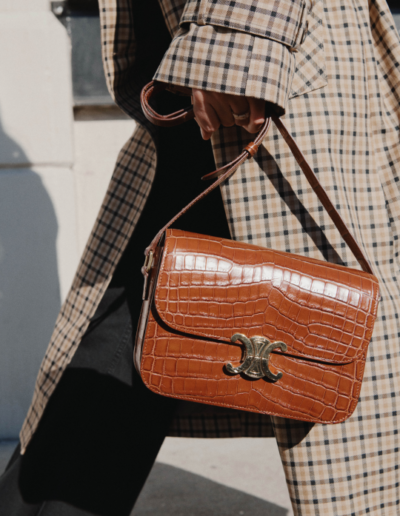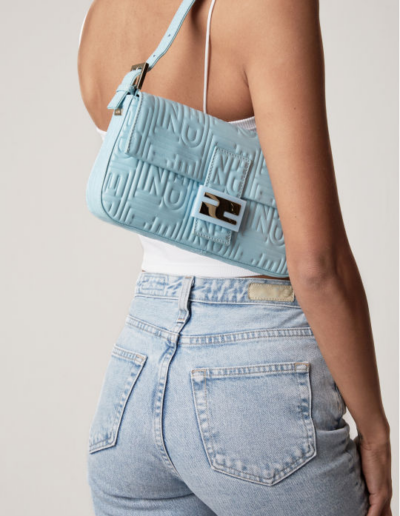DESIGNER 101
Gucci 101:
Past to present
By Koyaana R. July 29, 2020
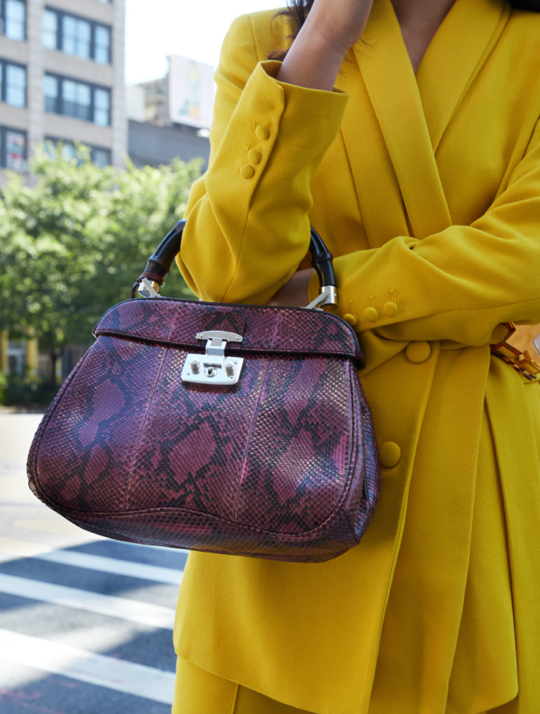
Gucci comes with a heritage that spans nearly a century.
With its upcoming one-hundred year anniversary, Gucci has taken heavy strides to revitalize its aesthetic while remaining true to its roots. Gucci has always been a heavy hitter in the luxury industry and the brand’s legacy can be traced back to its origins in Italy.
The History of Guccio Gucci’s Roots
back to its origins in Italy. In 1881 in Florence, the Italian capital of the Tuscany region, Guccio was born to a leather craftsman, a foreshadowing of his career to come. However, despite his upbringing, Guccio did not want to follow in his father’s footsteps and spent most of his teenage years traveling to London and Paris. While on his travels, he observed the life and style of the wealthy travelers that would frequent the hotel in which he worked. It was his position as a lift attendant at The Savoy in London where he specifically paid close attention to the luggage that many of the travelers would carry, noting its beauty and craftsmanship. With his new perception, it is no surprise that Guccio ended up going down the path that would make him famous.
In 1902, Gucci returned to Florence and took up a leather craftsman position with Franzi, a company that catered to nobility and royalty. Two decades later, in 1921, Gucci took the expertise he had learned at Franzi and branched out to open stores on Via Vigna Nuova and then Via del Parione in Florence under his own name. It would be here that he would turn his passion for style and luxury goods into a revolution that would shape the leather goods industry. For several years he and his sons, Aldo, Vasco, and Rodolfo, would produce high-quality luggage for which they became well known. However, from 1935 to 1936, an embargo of imported goods was placed on Italy by the League of Nations that would force them to come up with an alternative material with which to make their luggage. It was this pressing need that sparked the creation of the original diamante canvas: Gucci’s first signature print and true success.

Left to Right: Vasco, Aldo and Rodolfo
Courtesy of Pinterest
After World War II, pigskin was introduced to the line and would become the signature house material for the following decades. At the same time, Gucci’s bamboo-handled bags were seen on the arms of the social elite, stretching his influence to various corners of the world and heightening his fame. Inspired by the elite sport of horse racing, many of Gucci’s designs incorporated equestrian elements, such as stirrups, webbing, and snaffles. These unique elements would become mainstays in his aesthetic.
Several years and several stores later, Gucci and his sons opened up shop in New York which catapulted him into the luxury fashion industry in the United States. With his growing fan base, it was no surprise that it was a success, but this also proved to be a tragic year for the family. Only 15 days after the New York store opening, Guccio Gucci passed away.
Gucci is Sold to Investcorp
Following his passing, Gucci’s sons continued to grow the business, opening boutiques all over the world, while making the double G logo a true status symbol. Movie stars and the golden age of Hollywood brought glamour to Florence, with actors seen with the double G motif on clothing, accessories, and shoes. Everyone was wearing Gucci, which led to the 1970s being a prosperous decade for the company. With its product line expanding to watches, jewelry, ties, eyewear, and various luxury collaborations, Gucci was being seen everywhere. The company knew how to capitalize with its own name and the names of other luxury houses through collaboration to create sought-after and limited edition items, a concept that was rare for its time. However, this success was about to be tested. In 1983, Maurizio was appointed as head of the company and proceeded to make one of the most controversial decisions to date: he let go his uncle Aldo. Maurizio proved to be an unsuccessful president and was forced to sell the family-owned company to Investcorp, a Bahrain based investor who floated company until 1996. He later sold his remaining stock in 1993 back to the company and was murdered just two years later by a hitman hired by his ex-wife.
Just prior to Maurizio’s death, Tom Ford had been hired to design for Gucci’s ready-to-wear line by then creative director Dawn Mello
Tom Ford Takes Gucci in a New Direction
Just prior to Maurizio’s death, Tom Ford had been hired to design for Gucci’s ready-to-wear line by then creative director Dawn Mello. This decision would prove to be a saving grace for the company as its name had been tarnished by the recent years of family turmoil and constant changing of hands. Mello pushed for Ford’s ascension to creative director and with him, took the number of products offered from 20,000 to 5,000 to tighten the exclusivity and quality of the brand. Soon after, the new investors of Gucci, Pinault-Printemps-Redoute (Kering as of 2013), gained primary control of Gucci Group. At this time they made the decision to hire Domenico De Sole as president and CEO. Ford and De Sole became a dynamic duo, making core decisions to begin acquiring luxury brands to add to the Gucci’s portfolio.
Gucci continued to thrive with its brand diversity, even after they said goodbye to both De Sole and Ford in 2004. Tom Ford’s final collection for the brand was an incredible success and opened up speculation of who would succeed him. Oddly, it wasn’t a single person that would do so at first, but a team of his designers until 2005 when Frida Giannini was appointed as the sole creative director. During this time the brand relied heavily on the famed GG canvas handbag, nearly flooding the market with variation after variation. Giannini was trying to redirect the company from Tom Ford’s elaborate vision and take the aesthetic back to its historic roots. This would prove only to be marginally successful for the next decade until the appointment of the brand’s current creative director, Alessandro Michele.
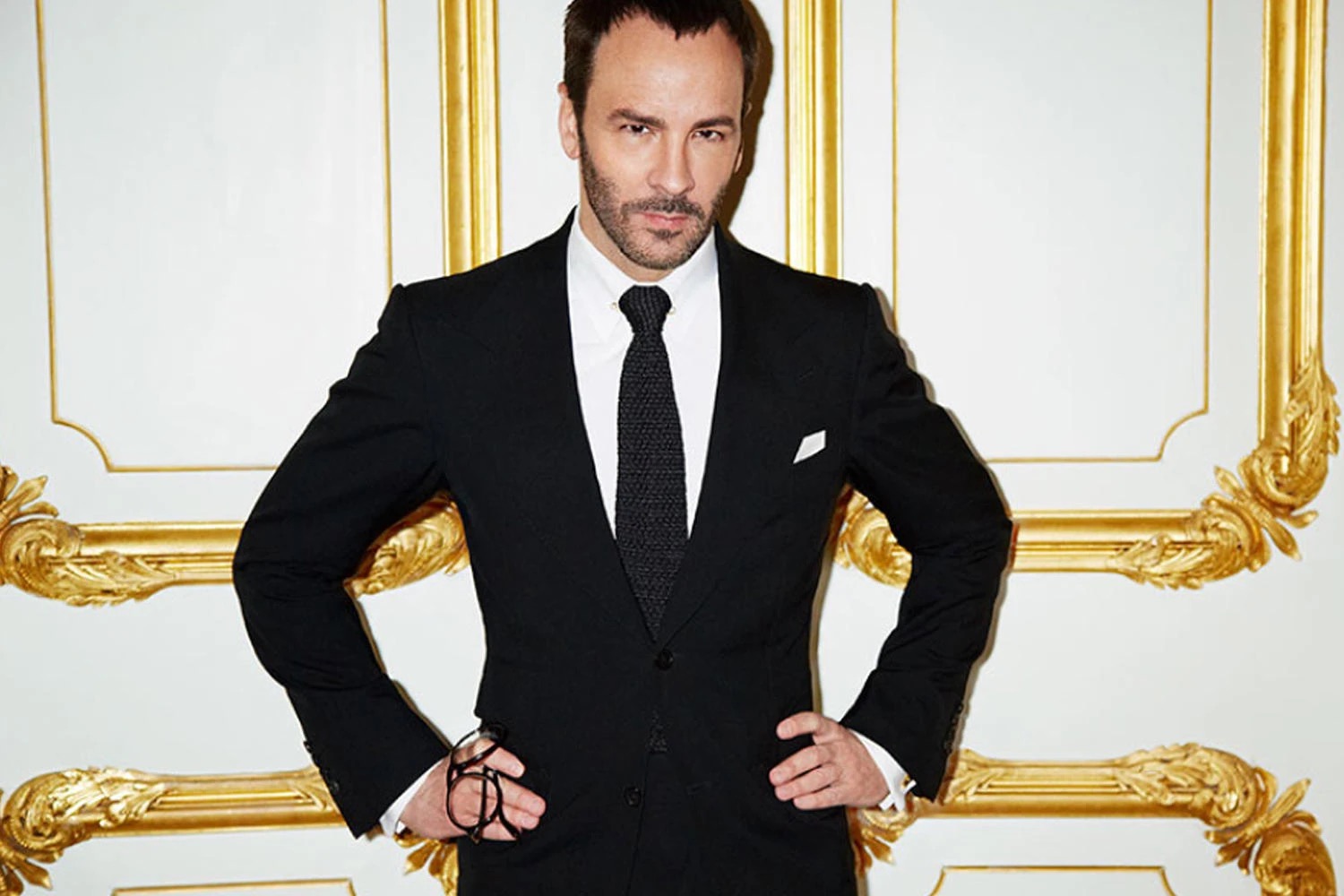
Courtesy of Sleek Magazine
The Arrival of Alessandro Michele
In 2014, Frida Giannini stepped down as creative director and a year later Alessandro Michele stepped in. Michele had been with Gucci for 12 years prior to his appointment and had been brought on by Tom Ford himself. Alessandro was an incredible choice for Gucci as a whole. He turned the aesthetic on its head, breathing new life into the then substandard brand. With his ability to tap into the age of Tom Ford for Gucci and using Giannini’s penchant for heritage, he melded the two together to create new and exciting collections that became instant successes.

Courtesy of W Magazine
His first handbag collection featured multiple styles with a double flap, coated canvas with various combinations of colors and leather, a thick chain, and a unique double snakehead clasp. It was dubbed the Dionysus and was the most exciting thing Gucci had debuted in over a decade. Every editor and fashion outlet was fawning over the new bags, and Alessandro did not disappoint by stopping there. Following the success of the Dionysus line, he soon introduced the Sylvie and Marmont collections, both of which have remained some of Gucci’s most popular collections, not to mention their domination of the resale market due to hard-to-find color combinations.
Michele has embraced collaboration. He does not believe that outside talent should be shunned. Instead, by tapping into pop culture and collaborating with famous street style designers and artists, Michele has managed to create a new and exciting aesthetic that brought in a major market that Gucci had yet to conquer: the millennials and Gen Z. Not only was he able to create various lines that they had to get their hands on, but managed to balance it with staples from the past. In 2018, the Ophidia collection, a true homage to the heritage of Gucci, highlighted reimagined classic silhouettes using signature elements. It was this balance that has allowed Gucci to not only bring classic lovers back into the fold but to move forward and reinvent itself enough to appeal to a younger generation as well.
Michele’s progressive and innovative thinking has done more than just allow Gucci to remain standing as a pillar in the luxury market – it has truly established the house as a key leader in the industry, regardless of its past troubles. Gucci is proof that the old and the new can complement one another and come together to create beautiful, dynamic collections. With its centennial celebration on the horizon, the industry is watching for more thoughtful and moving designs to come from the Italian powerhouse.

